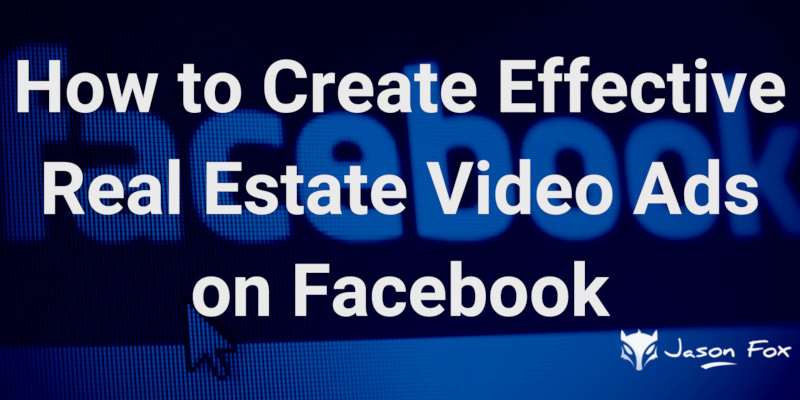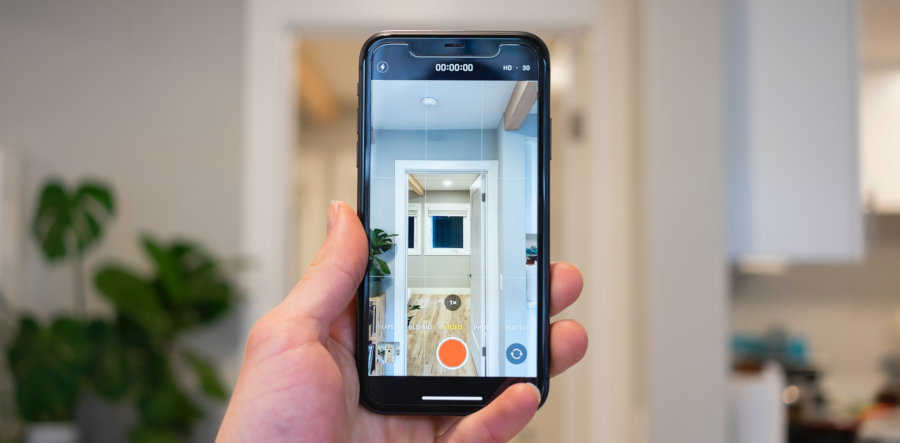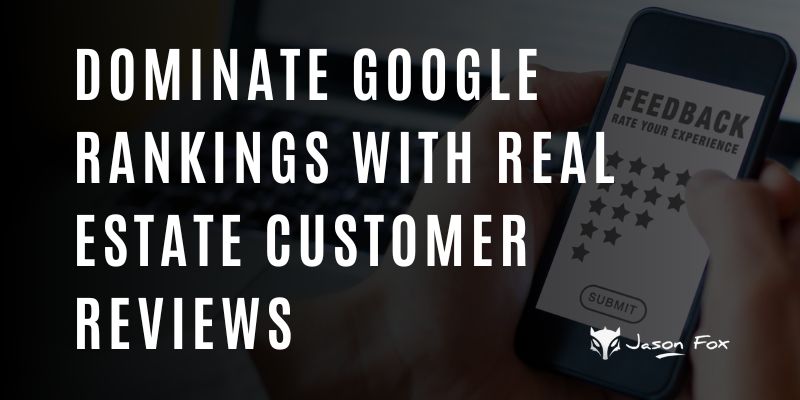How to Create Effective Real Estate Video Ads on Facebook
It’s highly unlikely that you wouldn’t have bumped into a real estate video ad on Facebook today.
Facebook seems to be the preferred social media channel for real estate marketers and videos, their favorite medium. How did we deduce this?
Not long ago, a survey found that 63% of real estate marketers invested in video production to connect with their target audience.
Furthermore, real estate marketers focused on Facebook because studies found more people watch Facebook videos than YouTube.
Like other businesses, real estate agents do understand the power of video content.
There is data to show that properties that contain at least one video get 4 times more leads than the others.
Today, we shall discuss the role of videos in real estate marketing and how to effectively use real estate video ads on Facebook.
 The Role of Video Marketing in Real Estate
The Role of Video Marketing in Real Estate
Why have real estate marketers taken to video ads? Why are they investing so much in Facebook?
Facebook isn’t the only social media platform. YouTube ads, Instagram ads, and several other options are open to marketers.
Plus, Facebook isn’t the biggest video hosting platform either. Yet, why do real estate marketers flock to Facebook?
Studies show that Facebook users are 5 times more likely to watch videos than other forms of content. Besides, as we discussed earlier, most people prefer visiting Facebook to real estate YouTube videos.
The real estate industry’s attraction towards video content is understandable.
Nowadays, video production is no expensive than creating other content types. Real estate agents can find video creators and editors at affordable rates from sites like Upwork.
Alternatively, agents can produce a video themselves. A tripod and a smartphone with a decent camera are the only two things one needs to record high-quality property videos.
Facebook does its part by providing Mobile Studio. This Facebook service helps users create video ads, include attractive fonts, add graphic elements, and other creative elements.
Why look elsewhere when everything needed to create real estate video ads is available in one place? These tools will help you create ads that stop users from overlooking your real estate videos.
 Points to Focus Before You Create Video Ads for Real Estate
Points to Focus Before You Create Video Ads for Real Estate
The following points will help create quality videos to achieve various goals including Facebook lead ads, drive traffic to increase website rank and conversions, and more.
Develop Buyer Personas
Facebook marketing with video ads will only work when you have a proper plan in place.
People will respond to ads that are relevant to them. Hence, even before creating real estate video ads, marketers should have a clear picture of their target audience.
You can begin by defining your target audience and developing one or more buyer personas.
We recommend creating multiple buyer personas because the target audience might be a combination of small, distinct groups.
You need multiple video ads to target each group. Bear in mind highly specific real estate video ads will increase the chances of generating leads.
Answers to the following questions will help you with the buyer personas:
- What locality appeals to the target audience?
- What types of properties will interest them?
- What amenities are vital to the target audience?
- What is their budget range?
- What doubts do they have about selling the house?
Capture Attention in the First Few Seconds of the Video Ad
Social media users seek instant gratification. Videos that don’t attract attention in the first 3 seconds will lose the audience.
With hundreds and thousands of videos that appear on the timeline, Facebook users will just scroll to the next video.
Your real estate video ads should give Facebook users a reason to keep watching.
Marketers can grab attention by opening the video with the main pain point of the target audience.
Seeing scenes that users can instantly understand and connect to will stop them from scrolling and pay attention to the advertisement.
The point is to make a connection with the audience. This can be achieved by opening the video ad with a bold statement, a leading question, a vital stat, a testimonial, or a striking image.
This is where the buyer personas you created in the previous phase will come in handy.
If the first 3 seconds of the video contains stuff that matters to the viewers, then your job is half done.
 Tips for an Effective Real Estate Video Ads Campaign on Facebook
Tips for an Effective Real Estate Video Ads Campaign on Facebook
In digital marketing, both hard work and smart work matter.
Most real estate marketing campaigns fail because they ignore crucial points that can get them noticed.
Here are a few best practices that’ll make the audience notice your ads from the thousands that are posted every day.
Closed Caption and Text Overlay
We all know about this, but let’s back it up with statistics. A vast majority of Facebook videos (78.2% to be precise) are watched without sound.
Video ads that depend on narration to elicit a favorable response from the viewers will lose out. Real estate marketers must use a combination of audio, images, and text overlays to convey their message.
This approach guarantees more than one benefit.
-
- The video will reach a wider audience.
- The message will make sense even without the sound.
- Text overlays will highlight the vital points of the video.
- Adding closed captions in different languages will remove the language barrier.
Use Short Videos to Maximize Impact
Video ads present a special challenge to real estate marketers.
Videos that are too short will not create the required impact and those that are too long will leave the audience disinterested and bored.
The ideal length of a video ad is around 12-15 seconds. This gives the real estate agents enough time to share important points necessary for the viewers to arrive at a decision.
The message that’s conveyed needs to be sufficiently clear so that the viewers aren’t confused and needn’t guess.
Information communicated in an informal style with a friendly tone has shown to have better engagement potential.
Split Testing
Split or A/B testing is an important part of video marketing on social media platforms.
It helps marketers identify videos with the best engagement metrics such as CTR, comments, likes, and shares.
Comparing various versions of a video ad, marketers can learn the tactics that work and those that don’t.
A/B testing also removes the guesswork from your decisions. Marketing campaigns based on the decisions derived from A/B testing will be much more efficient.
Real estate video ads that cleared split testing will have a greater impact on the target audience.
Combine Real Estate Ads and 360-degree Videos
In a real estate ad that urges people to buy or sell a house, visuals are an important element.
It isn’t enough to convey the right message; give them an experience they’ll never forget.
Real estate marketers can create an impact in less than 15 seconds available by using 360-degree videos.
Sometimes the total duration of the video ad is too short to give a whole 360-degree tour of the house.
In such a situation, focus on sections of the house that matter to the audience.
The short 360-degree video ads will pique the viewers’ interest and encourage them to explore further by clicking the ad.
 Video Specifications for Facebook
Video Specifications for Facebook
The demand for Facebook videos is only increasing each year. Hence, it’s no surprise that marketers want to choose the correct video specs for Facebook ads.
Specifications are also important for the proper optimization of the video ads.
Although the following ad types have different specifications, you can use them again in various retargeting platforms to maximize your return on investment.
Here is a list of different video ad types and specifications:
In-Feed Video Ads
Although Facebook allows video lengths up to 2 hours, most in-feed video ads are short.
The recommended aspect ratio for in-feed video ads is 9:16 to 16:9. Only use the highest resolution (1080×1080) for this purpose.
Carousel Ads
This type of video ad is becoming popular because the audience sees more content before taking an action.
According to Digiday, this type of advertisement is 10 times more effective than the others. The maximum frame rate allowed for carousel ads is 30fps and recommended aspect ratio is 1:1.
Slideshow Video Ads
With a maximum duration of 15 seconds, this type of ad is best suited for Facebook users with a slow internet connection.
The recommended specifications for this one are: aspect rations 1:1 (square), 4:50 (vertical), 16:9 (landscape); resolution 1200×720.
Instant Experience Ads
The audience experiences a full-screen video when the ad is clicked. Marketers can include more than one video ad, but the combined length should be less than 2 minutes.
The minimum recommended resolution is 720p, the aspect ratio is portrait (9:16), and the maximum frame rate is 30fps.
Collection Video Ads
Recommended for real estate agents planning to showcase multiple properties in one place. Here the thumbnails of multiple videos are displayed under the main video.
Users can click the thumbnail to watch the selected video. The recommended aspect ratio is 1:1 (square), the maximum frame rate is 30fps, and the resolution is 1080×1080.
Ads in Facebook Stories
These ads appear for 24 hours, after which they vanish. Real estate agents can use Facebook Story ads to promote limited period offers that’ll encourage the audience to take quick action.
Facebook stories are generally less than 2 minutes long and the recommended aspect ratio is 4:5 to 1.91:1 and 9:16.
Final Thoughts
Remember video advertisement marketing on Facebook isn’t easy.
Your competition is already on Facebook. Hence, there is no time to waste.
Use the information given in the article to create effective real estate video ads for Facebook.
post contents
It’s highly unlikely that you wouldn’t have bumped into a real estate video ad on Facebook today.
Facebook seems to be the preferred social media channel for real estate marketers and videos, their favorite medium. How did we deduce this?
Not long ago, a survey found that 63% of real estate marketers invested in video production to connect with their target audience.
Furthermore, real estate marketers focused on Facebook because studies found more people watch Facebook videos than YouTube.
Like other businesses, real estate agents do understand the power of video content.
There is data to show that properties that contain at least one video get 4 times more leads than the others.
Today, we shall discuss the role of videos in real estate marketing and how to effectively use real estate video ads on Facebook.
 The Role of Video Marketing in Real Estate
The Role of Video Marketing in Real Estate
Why have real estate marketers taken to video ads? Why are they investing so much in Facebook?
Facebook isn’t the only social media platform. YouTube ads, Instagram ads, and several other options are open to marketers.
Plus, Facebook isn’t the biggest video hosting platform either. Yet, why do real estate marketers flock to Facebook?
Studies show that Facebook users are 5 times more likely to watch videos than other forms of content. Besides, as we discussed earlier, most people prefer visiting Facebook to real estate YouTube videos.
The real estate industry’s attraction towards video content is understandable.
Nowadays, video production is no expensive than creating other content types. Real estate agents can find video creators and editors at affordable rates from sites like Upwork.
Alternatively, agents can produce a video themselves. A tripod and a smartphone with a decent camera are the only two things one needs to record high-quality property videos.
Facebook does its part by providing Mobile Studio. This Facebook service helps users create video ads, include attractive fonts, add graphic elements, and other creative elements.
Why look elsewhere when everything needed to create real estate video ads is available in one place? These tools will help you create ads that stop users from overlooking your real estate videos.
 Points to Focus Before You Create Video Ads for Real Estate
Points to Focus Before You Create Video Ads for Real Estate
The following points will help create quality videos to achieve various goals including Facebook lead ads, drive traffic to increase website rank and conversions, and more.
Develop Buyer Personas
Facebook marketing with video ads will only work when you have a proper plan in place.
People will respond to ads that are relevant to them. Hence, even before creating real estate video ads, marketers should have a clear picture of their target audience.
You can begin by defining your target audience and developing one or more buyer personas.
We recommend creating multiple buyer personas because the target audience might be a combination of small, distinct groups.
You need multiple video ads to target each group. Bear in mind highly specific real estate video ads will increase the chances of generating leads.
Answers to the following questions will help you with the buyer personas:
- What locality appeals to the target audience?
- What types of properties will interest them?
- What amenities are vital to the target audience?
- What is their budget range?
- What doubts do they have about selling the house?
Capture Attention in the First Few Seconds of the Video Ad
Social media users seek instant gratification. Videos that don’t attract attention in the first 3 seconds will lose the audience.
With hundreds and thousands of videos that appear on the timeline, Facebook users will just scroll to the next video.
Your real estate video ads should give Facebook users a reason to keep watching.
Marketers can grab attention by opening the video with the main pain point of the target audience.
Seeing scenes that users can instantly understand and connect to will stop them from scrolling and pay attention to the advertisement.
The point is to make a connection with the audience. This can be achieved by opening the video ad with a bold statement, a leading question, a vital stat, a testimonial, or a striking image.
This is where the buyer personas you created in the previous phase will come in handy.
If the first 3 seconds of the video contains stuff that matters to the viewers, then your job is half done.
 Tips for an Effective Real Estate Video Ads Campaign on Facebook
Tips for an Effective Real Estate Video Ads Campaign on Facebook
In digital marketing, both hard work and smart work matter.
Most real estate marketing campaigns fail because they ignore crucial points that can get them noticed.
Here are a few best practices that’ll make the audience notice your ads from the thousands that are posted every day.
Closed Caption and Text Overlay
We all know about this, but let’s back it up with statistics. A vast majority of Facebook videos (78.2% to be precise) are watched without sound.
Video ads that depend on narration to elicit a favorable response from the viewers will lose out. Real estate marketers must use a combination of audio, images, and text overlays to convey their message.
This approach guarantees more than one benefit.
-
- The video will reach a wider audience.
- The message will make sense even without the sound.
- Text overlays will highlight the vital points of the video.
- Adding closed captions in different languages will remove the language barrier.
Use Short Videos to Maximize Impact
Video ads present a special challenge to real estate marketers.
Videos that are too short will not create the required impact and those that are too long will leave the audience disinterested and bored.
The ideal length of a video ad is around 12-15 seconds. This gives the real estate agents enough time to share important points necessary for the viewers to arrive at a decision.
The message that’s conveyed needs to be sufficiently clear so that the viewers aren’t confused and needn’t guess.
Information communicated in an informal style with a friendly tone has shown to have better engagement potential.
Split Testing
Split or A/B testing is an important part of video marketing on social media platforms.
It helps marketers identify videos with the best engagement metrics such as CTR, comments, likes, and shares.
Comparing various versions of a video ad, marketers can learn the tactics that work and those that don’t.
A/B testing also removes the guesswork from your decisions. Marketing campaigns based on the decisions derived from A/B testing will be much more efficient.
Real estate video ads that cleared split testing will have a greater impact on the target audience.
Combine Real Estate Ads and 360-degree Videos
In a real estate ad that urges people to buy or sell a house, visuals are an important element.
It isn’t enough to convey the right message; give them an experience they’ll never forget.
Real estate marketers can create an impact in less than 15 seconds available by using 360-degree videos.
Sometimes the total duration of the video ad is too short to give a whole 360-degree tour of the house.
In such a situation, focus on sections of the house that matter to the audience.
The short 360-degree video ads will pique the viewers’ interest and encourage them to explore further by clicking the ad.
 Video Specifications for Facebook
Video Specifications for Facebook
The demand for Facebook videos is only increasing each year. Hence, it’s no surprise that marketers want to choose the correct video specs for Facebook ads.
Specifications are also important for the proper optimization of the video ads.
Although the following ad types have different specifications, you can use them again in various retargeting platforms to maximize your return on investment.
Here is a list of different video ad types and specifications:
In-Feed Video Ads
Although Facebook allows video lengths up to 2 hours, most in-feed video ads are short.
The recommended aspect ratio for in-feed video ads is 9:16 to 16:9. Only use the highest resolution (1080×1080) for this purpose.
Carousel Ads
This type of video ad is becoming popular because the audience sees more content before taking an action.
According to Digiday, this type of advertisement is 10 times more effective than the others. The maximum frame rate allowed for carousel ads is 30fps and recommended aspect ratio is 1:1.
Slideshow Video Ads
With a maximum duration of 15 seconds, this type of ad is best suited for Facebook users with a slow internet connection.
The recommended specifications for this one are: aspect rations 1:1 (square), 4:50 (vertical), 16:9 (landscape); resolution 1200×720.
Instant Experience Ads
The audience experiences a full-screen video when the ad is clicked. Marketers can include more than one video ad, but the combined length should be less than 2 minutes.
The minimum recommended resolution is 720p, the aspect ratio is portrait (9:16), and the maximum frame rate is 30fps.
Collection Video Ads
Recommended for real estate agents planning to showcase multiple properties in one place. Here the thumbnails of multiple videos are displayed under the main video.
Users can click the thumbnail to watch the selected video. The recommended aspect ratio is 1:1 (square), the maximum frame rate is 30fps, and the resolution is 1080×1080.
Ads in Facebook Stories
These ads appear for 24 hours, after which they vanish. Real estate agents can use Facebook Story ads to promote limited period offers that’ll encourage the audience to take quick action.
Facebook stories are generally less than 2 minutes long and the recommended aspect ratio is 4:5 to 1.91:1 and 9:16.
Final Thoughts
Remember video advertisement marketing on Facebook isn’t easy.
Your competition is already on Facebook. Hence, there is no time to waste.
Use the information given in the article to create effective real estate video ads for Facebook.
Latest articles
First-time homebuyers are probably eager to find their forever home in the housing market. However, there’s plenty of mystery behind the buying landscape, how to purchase and other considerations they should make.
Unlock the potential of content marketing in real estate with actionable strategies designed to boost your online presence and engage clients effectively.
The Importance of Google Rankings for Real Estate Agents Over the past fifteen years, I’ve seen how a good Google ranking can make or break a real estate business. Higher rankings mean more people seeing
BECOME A MEMBER
Become A Free DIY Real Estate Marketing Member & Get Access To:
LARGEST COLLECTION OF
Real Estate Marketing e-Books, Guides, Templates, & whitepapers
ON THE INTERNET
+ OVER 70 How To Website Training Videos including; WordPress, Agent Evolution Themes, & IDX Broker
+ DIY Real Estate Marketing Tips and Strategies Delivered to Your Inbox
Share this article
recent posts

Written by : Cristian Stanciu
Cristian Stanciu is a freelance video editor, owner and post-production coordinator of Veedyou Media – a company offering video editing services to videographers, marketing agencies, video production studios or brands all over the globe. I can catch up with him on his <a href="https://www.veedyou.com/blog/">blog</a> or on <a href="https://www.linkedin.com/in/cristian-stanciu-731478183/">LinkedIn</a>.



 The Role of Video Marketing in Real Estate
The Role of Video Marketing in Real Estate Points to Focus Before You Create Video Ads for Real Estate
Points to Focus Before You Create Video Ads for Real Estate Tips for an Effective Real Estate Video Ads Campaign on Facebook
Tips for an Effective Real Estate Video Ads Campaign on Facebook Video Specifications for Facebook
Video Specifications for Facebook

